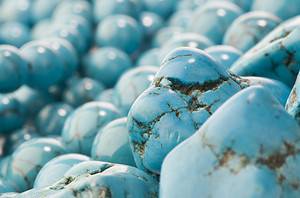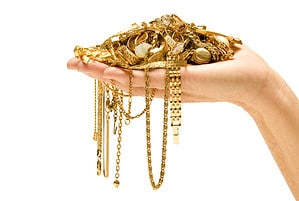Pearls are a true marvel of nature, formed in the heart of oysters and mussels. But did you know that there are many different types of pears, each with striking differences? Certain types, unique and rare, are considered to be precious treasures and have corresponding price tags. These rare pearls have distinct shapes, colors, and sizes, each carrying a unique tale and source. In this article, we will dive into 10 of the rarest pearls in the world. We’ll discuss the reasons behind their rarity, their origins, and the exceptional attributes that set each apart.
Definition Of Rarity
Not all pearls are rare. While pearls, in general, are considered precious, the rarity of a pearl depends on various factors. Natural pearls formed without human intervention are considered rare because they occur spontaneously in a small percentage of oysters. However, cultured pearls, which are intentionally cultivated with human assistance, are more common and accessible in the market. In fact, there are actually many pearl farms scattered across the world!
The rarity of pearls is determined based on several factors.
Size: Just like the fact that large diamonds are harder to find, big pearls are rarer and hence, more valuable than small ones.
Shape: Perfectly round pearls are hard to make, making them very rare. But pearls in unique shapes, like oval or irregular ones may also be considered precious.
Color: While the most common colors are white and black, pearls come in many colors, from yellows and pinks to cool blues and violets. Some pearls even have a ‘rainbow’ shimmer. The rarer the color, the more valuable the pearl. Also, trends and traditions can affect which colors are most in demand.
Luster: This is like the pearl’s glow. The brighter and sharper the glow, the more valuable the pearl is.
Surface Quality: Most pearls aren’t perfect and might have scratches or wrinkles. If these are too many or too obvious, they can make the pearl less valuable.
Nacre Quality: Nacre is what gives a pearl its glow. If the nacre is thin, the pearl might look dull and less durable, lowering its overall value.
Matching: If you’re looking at a piece of jewelry with more than one pearl, how well they match in terms of size, shape, color, etc., also matters.
1. Melo Melo Pearl

This large sea snail creates the incredibly rare Melo Melo Pearl.
©VladyslaV Travel photo/Shutterstock.com
The Melo Melo pearl stands out as incredibly valuable among its counterparts. Unlike traditional oyster-derived pearls, this precious jewel emerges from Melo Melo sea snails, predominantly inhabiting the South China Sea in Southeast Asia.
Fun fact: These snails bear an uncanny resemblance to coconut shells!
Encompassing many colors ranging from yellow to orange, the Melo Melo pearls remain the most sought-after and expensive. Comparable to a photograph that may gradually fade under the sun’s rays, these pearls, too, can lose their vividness if excessively exposed to sunlight.
Typically exhibiting a spherical shape, Melo Melo pearls occasionally reach sizes as substantial as a golf ball. However, discovering one is like finding a needle in a vast haystack. Countless snails must be opened to stumble upon a single pearl, and locating one with impeccable orange coloring proves even more challenging.
If you are thinking about purchasing one, be prepared to invest a substantial sum. A top-tier Melo Melo pearl can fetch a price exceeding $75,000. Should it find its place in a jewelry set, the value can skyrocket to a staggering $250,000.
Numerous attempts have been made to artificially cultivate these pearls; however, they have yet to achieve the desired outcome thus far.
2. Conch Pearl
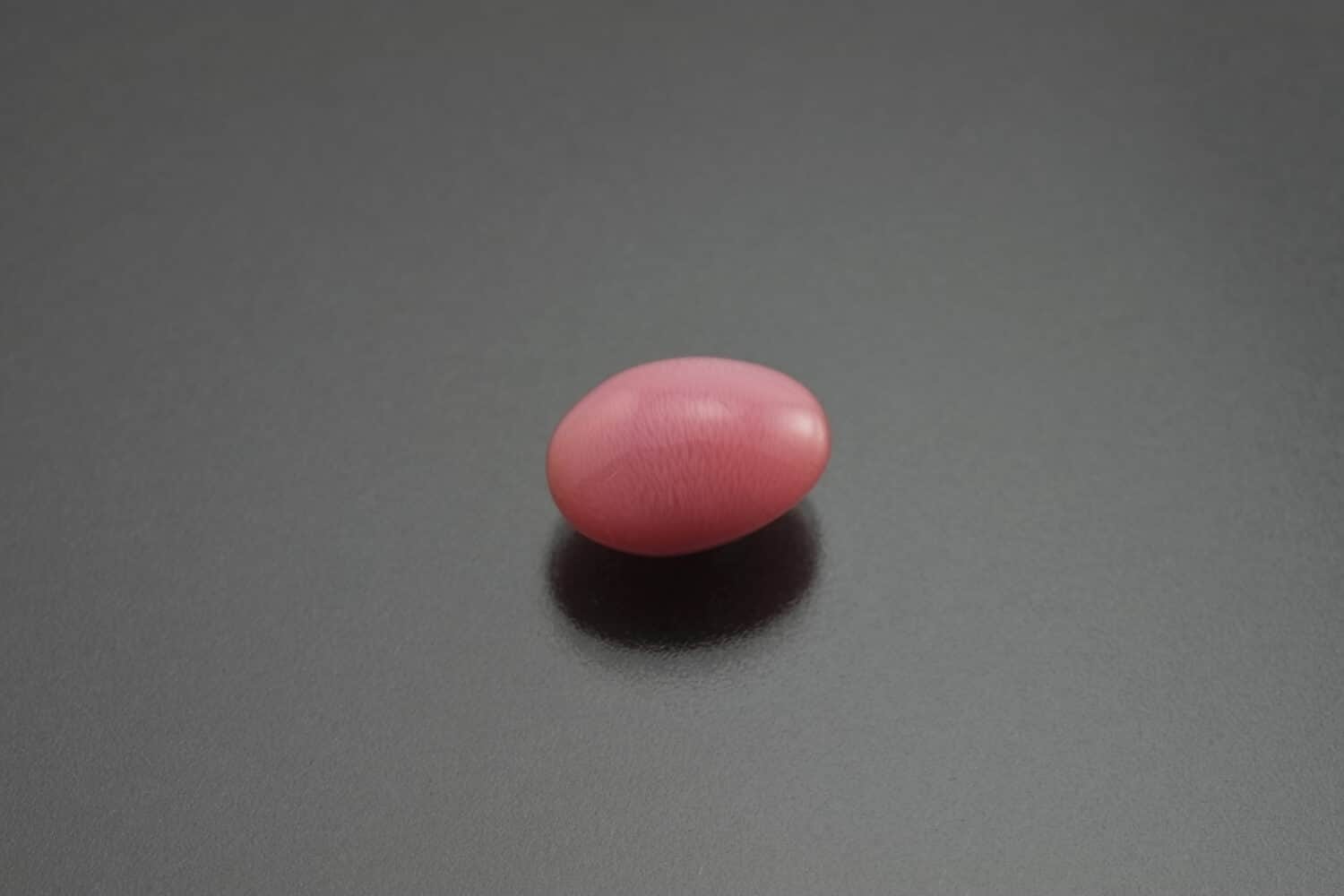
Another one of the rarest pearls in the world is the conch pearl which is generally pink or watermelon colored.
©osinko/Shutterstock.com
Conch pearls are incredibly unique and rare pearls that originate from the queen conch mollusk, which is found in the Caribbean.
Unlike traditional pearls, conch pearls are all-natural and have no typical shiny appearance. Instead, they exhibit a range of exquisite hues, ranging from pink to a watermelon-like color. In some cases, these pearls even have a flame-like pattern on their surface.
Obtaining a conch pearl is an exceptional feat, as they are incredibly rare. In fact, only one of these precious pearls is discovered in approximately every 10,000 to 20,000 queen conch shells.
Furthermore, less than 10% of these conch pearls are suitable for jewelry.
Adding to their rarity, the queen conch mollusk has been listed as endangered under the Convention on International Trade in Endangered Species (CITES) agreement since 1992. This, along with their scarcity and unique characteristics, contributes to the high value and rarity of conch pearls.
Although conch pearls lack the traditional lustrous shine of other pearls, their distinct beauty makes them the second rarest pearls in the world.
3. Abalone Pearl
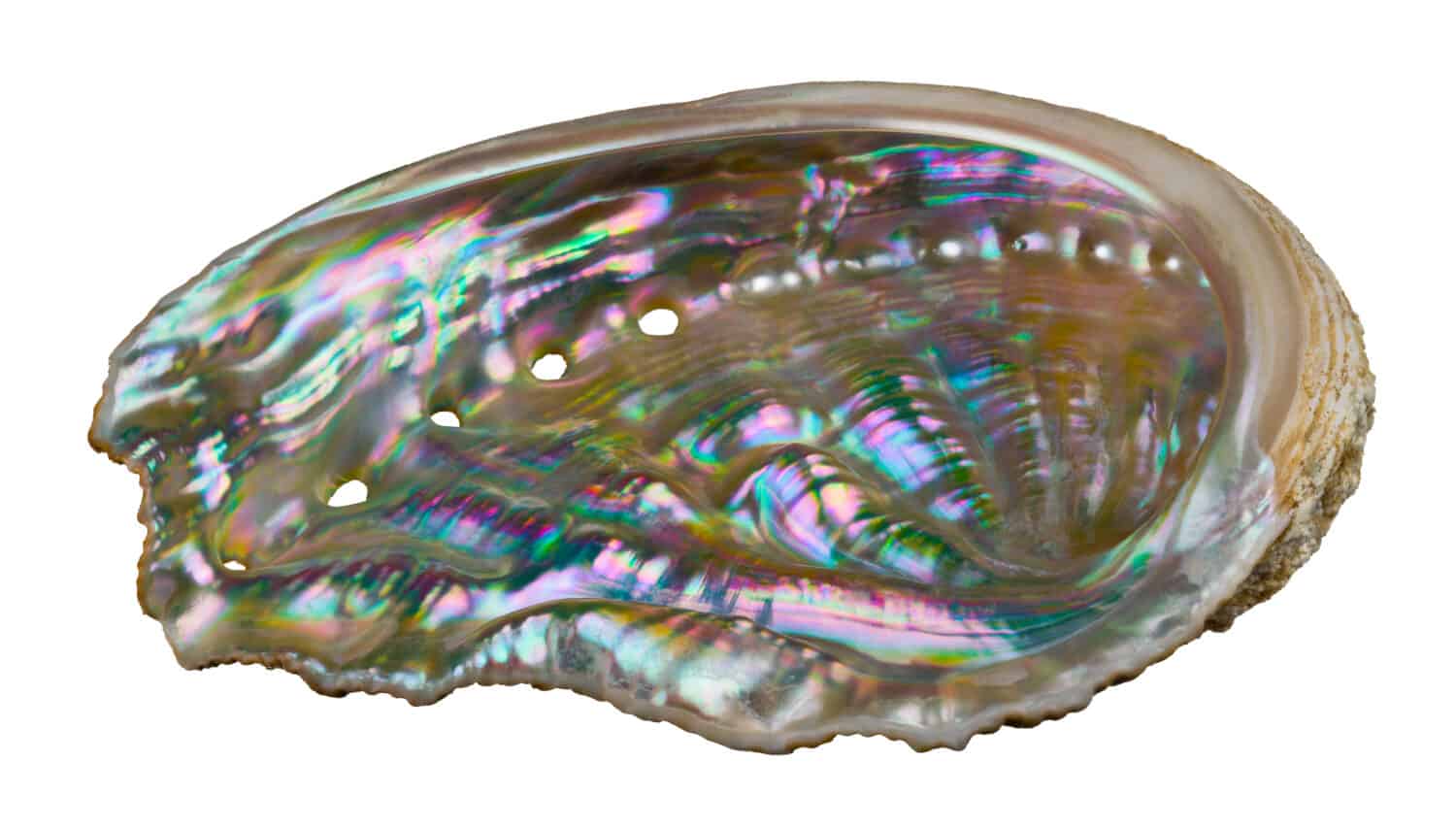
This is an abalone shell, which is what produces the rare abalone pearl.
©KPixMining/Shutterstock.com
Abalone pearls are scarce gems known for their distinct colors and unique shapes. These pearls possess a metallic blue-green base, adorned with a swirl of hues like vivid green, purple, royal blue, cream, pink, and yellow.
In terms of shape, most abalone pearls resemble either a horn or a shark tooth, but occasionally, you can stumble upon symmetrical or round ones. They can be either hollowed or solid, with the finest examples boasting a mirror-like shine, intense colors, sturdy structure, and a balanced shape.
These pearls are formed by special snails that cling to rocks in cold coastal waters. The chance of finding an abalone pearl is incredibly rare, as only one out of every 100,000 snails produces one. Moreover, these pearls tend to be delicate and prone to developing lengthwise cracks, making them quite challenging to use in jewelry.
The process of an abalone pearl’s development takes around 8 to 10 years. However, most abalone snails are harvested within the first four or five years of their lives, preventing them from fully forming a pearl. It’s worth mentioning that the largest recorded abalone pearl in the world, according to the Guinness World Records, is a stunning 718.50-carat iridescent baroque pearl shaped like a horn.
4. South Sea Pearls
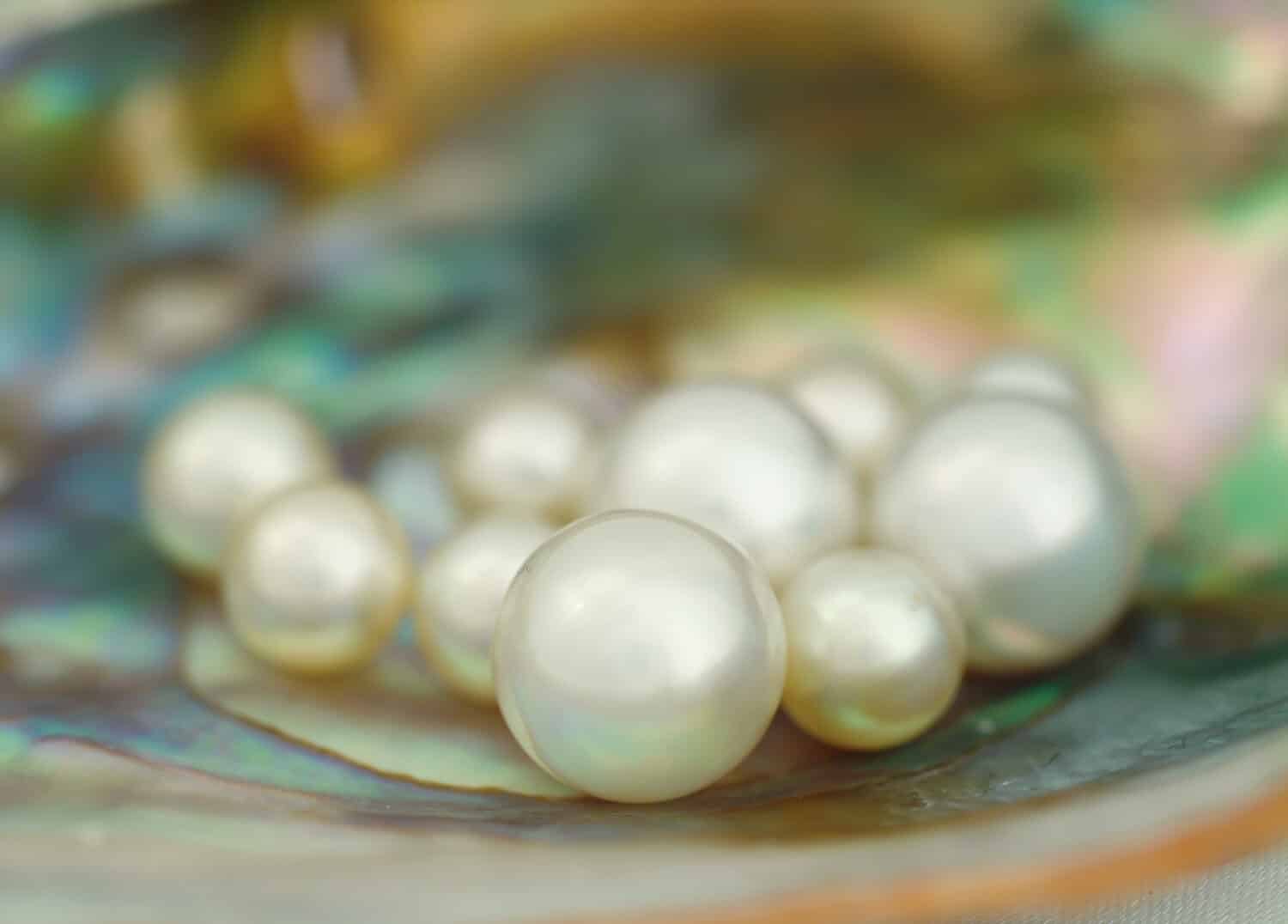
The Pinctada maxima oyster produces the rare and beautiful South Sea pearl.
©Plamen Galabov/Shutterstock.com
South Sea pearls are produced by a specific oyster species, the silver-lipped pearl or Pinctada maxima oyster. What sets them apart is their abundant nacre layer, contributing to their extraordinary quality. A standout feature of these pearls is their inherent shine or luster, which illuminates them from within as light bounces off their surface.
Grown in the warm, tropical waters of the South Pacific, particularly in Australia, Indonesia, and the Philippines, South Sea pearls are distinguished by their larger size and excellent quality. They are often dubbed Australian South Sea pearls and exhibit a striking palette of colors, encompassing white, cream, golden, and even dark black.
The natural sheen of South Sea pearls should not be confused with the artificial gloss of treated or faux pearls, which diminishes over time. The sheen of South Sea pearls is both long-lasting and authentic.
The rarity of Australian South Sea Pearls has earned them the reputation of being one of the most valuable pearls worldwide. These pearls are also commonly known as the “Queen of Pearls”.
South Sea pearls are generally larger than others, typically measuring between 0.40 to 0.60 inches in diameter. Some pearls can even reach up to 0.80 inches in size.
The production of South Sea pearls is done using pearl farming. This involves implanting a small piece of tissue from one oyster into another. The recipient oyster is then carefully tended in a regulated environment, such as a pearl farm or lagoon. The pearl reaches full development in about two years.
5. Quahog Pearls

Several interesting variations of color, size, and shape of Quahog pearls lined up.
©GlobalGemology / CC BY-SA 4.0 – License
Quahog pearls are extremely scarce pearls in New England. A unique hint pointing to a pearl’s existence is a pronounced ridge on a quahog shell’s edge. Yet, shells possibly containing pearls are frequently neglected or thrown away during industrial harvesting.
The rarity of quahog pearl production has escalated due to the modern cleaning and shucking techniques employed, often leading to the potential of pearls being lost or damaged. It’s projected that a mere one in every 100,000 quahog clams produces a pearl, and most of these pearls lack the aesthetic appeal required for jewelry use.
In terms of color, white is the most prevalent and least rare color for quahog pearls, often making them the most budget-friendly option. Conversely, hues ranging from purple to lavender are much more uncommon and cost the most.
Other colors, including beige, brown, and black, can also occur. Generally, the more consistent the pearl’s color, the higher its value, though some uniquely attractive bicolor or tricolor pearls might be exceptions to this rule.
6. Scallop Pearl
Scallop pearls are among the rarest pearls in the world. Similar to Melo Melo and conch pearls, scallop pearls are classified as non-nacreous natural pearls. This means that instead of being composed of nacre or aragonite, they are formed from calcite.
Scallops, a type of mollusk, form these pearls. Scallop shells bear a resemblance to the paw of a lion.
Wild scallops are typically harvested primarily for their succulent meat rather than pearls. This is due to the scarcity of scallop pearls in nature, with only one pearl found in approximately 10,000 scallops.
Scallop pearls are quite small, ranging from a few millimeters in size to as large as half an inch. They consist mainly of calcite. The color of these pearls can vary from white to shades of brown, cream, pink, and even black.
Just like other natural pearls, scallop pearls can exhibit various shapes, such as round, off-round, rain-drop shaped, baroque, or oval.
In recent decades, scallop pearls have gained increasing popularity among collectors and enthusiasts. The price of these pearls typically ranges from 100 to 2,500 dollars per carat, reflecting their exceptional rarity.
7. Blue Akoya Pearl
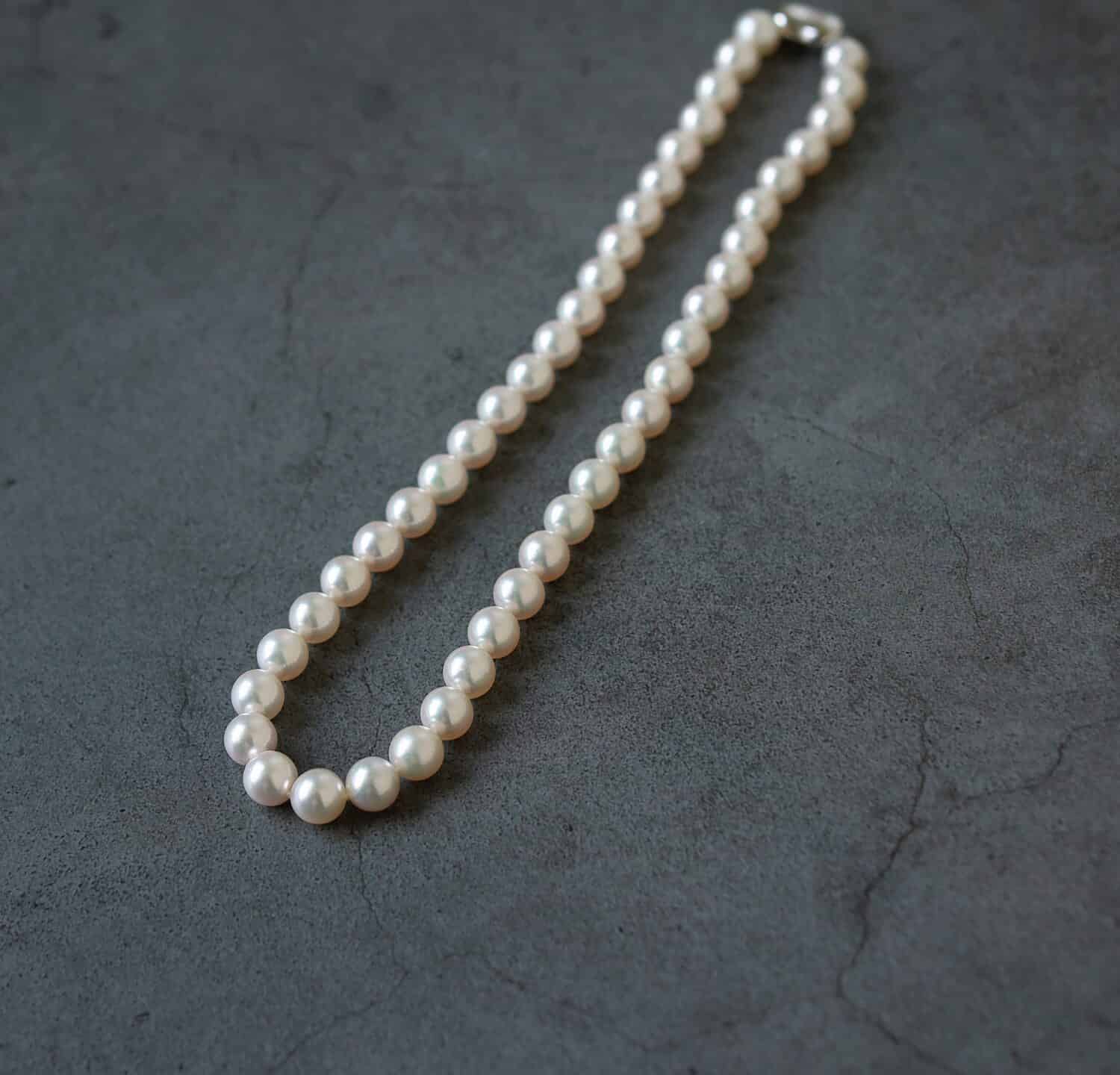
While Akoya pearls have been popular for a long time, the blue variety was not very popular until recently.
©airui69/Shutterstock.com
Blue Akoya pearls are a remarkable and uncommon variety known for their stunning round shape and brilliant, reflective luster. While Akoya pearls are traditionally rose, white with silver, or ivory overtones, blue Akoya pearls are a rarity due to their distinctive characteristics.
In the past, blue Akoya pearls were often disregarded and discarded by pearl farm owners. This was primarily because these pearls displayed a free-form baroque shape, deviating from the desired perfectly round shape.
Additionally, most naturally colored blue Akoya pearls lacked the necessary thickness of the nacre, which caused them to deteriorate quickly. With these pearls, a peeling nacre and a visible white nucleus would become evident within a few years.
However, attitudes toward blue Akoya pearls have shifted in recent years, and jewelers have begun to appreciate their unique beauty. A top-quality blue Akoya pearl can be identified by its deep blue color and intense overtones. These pearls possess a thick nacre layer and can be used in jewelry just like any other pearl. Finding blue Akoya pearls is rare, and they are considered extraordinary gems.
8. Tahitian Black Pearl
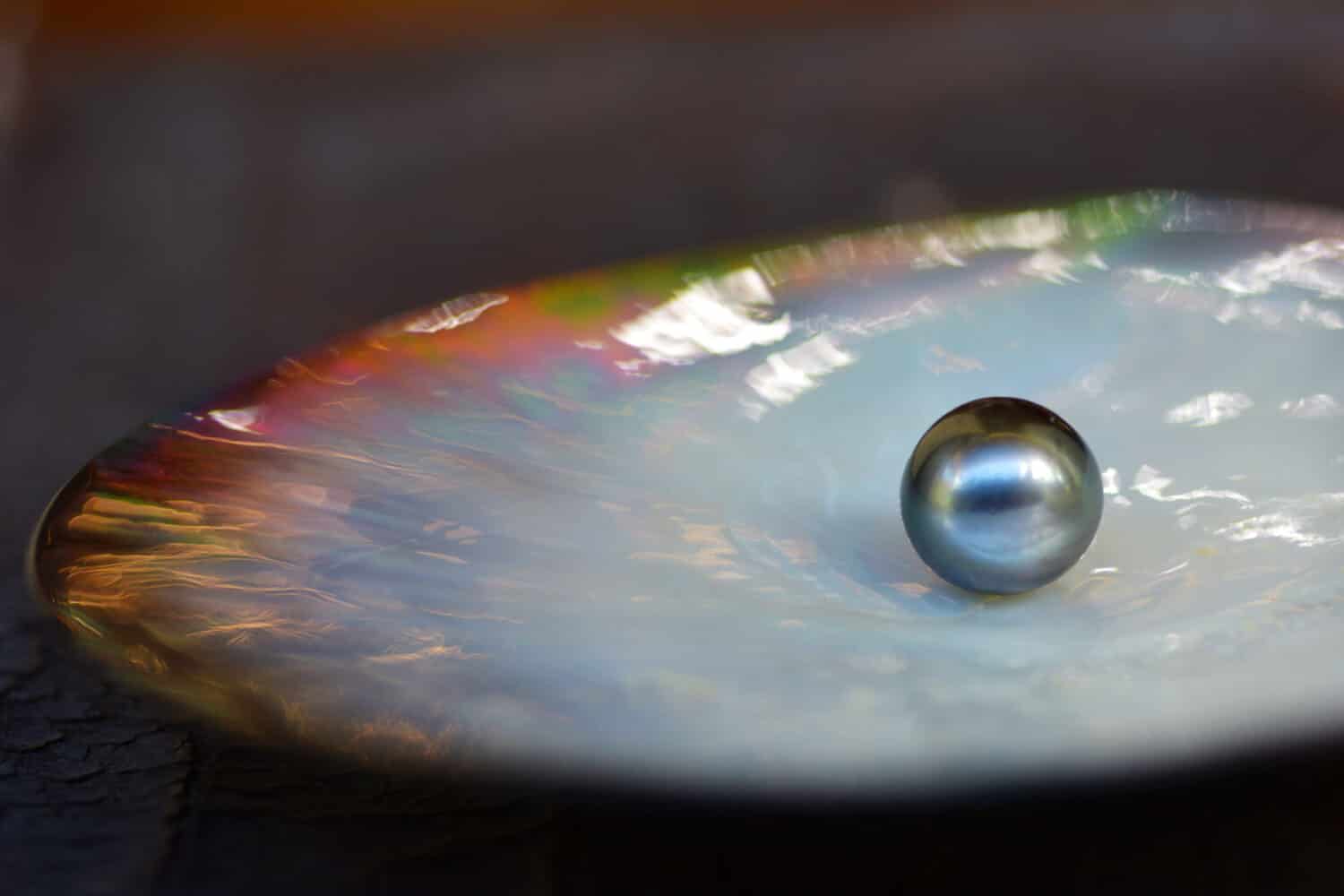
With their black and silvery appearance, Tahitian black pearls are beautiful and extremely sought after.
©ChameleonsEye/Shutterstock.com
Tahitian pearls, commonly known as Black pearls, are formed by the black-lipped mussel called Pinctada margaritifera. These pearls are highly esteemed for their naturally dark hues. However, genuine black Tahitian pearls are incredibly rare. The pearls referred to as black are actually shades of silver, dark green, or charcoal grey. All Tahitian pearls possess subtle undertones of blue, pink, silver, green, and yellow.
Tahitian pearls tend to be larger compared to regular cultured pearls. On average, they range between 0.28 inches and 0.71 inches. They come in various shapes, including round, nearly round, button, oval, circle, teardrop, and baroque.
Fun fact: Tahitian pearls contribute to more than 55% of French Polynesia’s annual exports, amounting to around 20 million dollars.
9. Sea of Cortez Pearls
Sea of Cortez pearls are the rarest cultured pearls globally. These pearls come in a unique variety of colors not found in any other pearl.
Rainbow-lipped pearl oysters produce these pearls exclusively found in the Baja Peninsula, Mexico, and northern Peru. The remarkable pigments produced by these oysters include shades of black, gray, pink, green, gold, and purple. Only around 4,000 Sea of Cortez pearls are created each year, making them highly coveted and rare.
All pearls possess a natural iridescence that imparts a radiant glow, even without polishing. This smooth and lustrous surface is actually composed of multiple layers of nacre, a substance produced by pearl oysters and other mollusks to coat the inner surface of their shells. Interestingly, oysters also utilize this same substance to coat any irritants they encounter within their shells, creating pearls as a result.
The size of Sea of Cortez pearls ranges from approximately 0.31 to 0.47 inches, with larger ones being exceptionally rare.
Fun Fact: Sea of Cortez pearls are the only cultured pearls in the world that exhibit a glowing effect under UV lighting!
10. Purple Edison Pearls
Purple Edison pearls are a relatively new addition to the world of freshwater pearls. These large pearls have been available in the market since 2014. Pearl farms in China are the primary producers of purple Edison pearls. The specific production process of Edison pearls remains undisclosed, but most scientists believe cross-breeding techniques the Chinese pearl farms utilize cross-breeding.
The diameter of Edison pearls ranges from approximately 0.51 inches to 0.67 inches, allowing them to grow to such impressive sizes because they develop individually. While you can find Edison pearls in various colors, purple ones are the rarest and most sought-after. Other available colors include pink, white, plum, and cream.
Edison pearls are renowned for their metallic luster, which gives them a captivating shine, and their beautiful round shape. While expensive, they are generally more affordable than pearls from the sea. Each Edison pearl requires around 2 to 3 years to fully develop.
The name “Edison Pearl” is inspired by the famous American scientist Thomas Edison. In one of his remarks about his research, he humorously stated, “There are two things you can’t get in my laboratory – diamonds and pearls.”
Summary of Rarest Pearl Types in the World
| Rank | Pearl | Type |
|---|---|---|
| 1 | Melo Melo Pearl | Natural |
| 2 | Conch Pearl | Natural |
| 3 | Abalone Pearl | Natural |
| 4 | South Sea Pearl | Cultured |
| 5 | Quahog Pearls | Natural |
| 6 | Scallop Pearl | Natural |
| 7 | Blue Akoya Pearl | Cultured |
| 8 | Tahitian Black Pearl | Cultured |
| 9 | Sea Of Cortez Pearl | Cultured |
| 10 | Purple Edison Pearls | Cultured |
The photo featured at the top of this post is © Plamen Galabov/Shutterstock.com
Thank you for reading! Have some feedback for us? Contact the AZ Animals editorial team.



